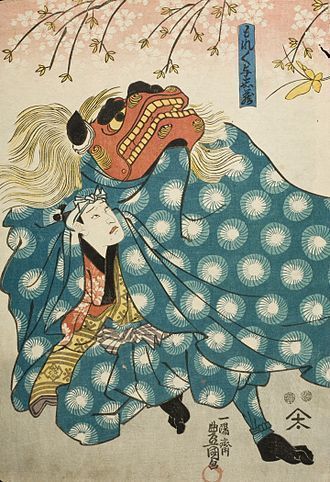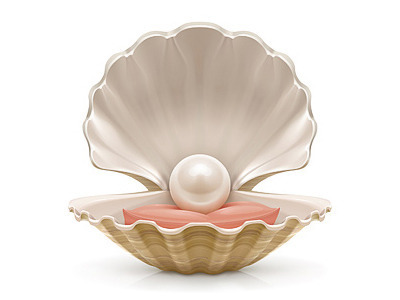2017年12月18日
江戸東京博物館 正月 ♪ 【獅子舞 日本の伝統芸能】 Edo-Tokyo
江戸東京博物館 正月 ♪ 【獅子舞 日本の伝統芸能】 Edo-Tokyo
https://youtu.be/q1rewRtpiRg
iamshinya777
2013/01/04 に公開
獅子舞 日本の伝統 女性 獅子舞 女性の獅子舞 入館無料
2013年 正月 正月イベント イベント盛りだくさん
墨田区 江戸東京博物館の新春企画 「えどはくでお正月!」 獅子舞
江戸東京博物館 イベント
今年一年の厄除け厄払いにぜひおいで下さい。
民族歌舞団 荒馬座
「獅子」は昔から人々に幸せをもたらすものとして、関東地方の三匹獅子、北陸地方のむかで獅子、東北地方の権現様、沖縄ではシーサーと日本の各地で様々な形で踊られています。
荒馬座の舞台でもいろいろな獅子舞を扱いますが、主に踊っているのは「江戸里神楽」の「寿獅子」です。粋な江戸囃子にのったキレのよい動きと獅子頭を細かく操る繊細な所作が特徴です。踊りの途中で無病息災・厄除け厄払い、皆さんのご健康や幸せを願って客席に入り頭を噛んで回ります。
獅子舞(ししまい)とは、伝統芸能の一つで、祭囃子にあわせて獅子が舞い踊るものである。
伝統芸能(でんとうげいのう)とは、日本に古くからあった芸術と技能の汎称。特定階級または大衆の教養や娯楽、儀式や祭事などを催す際に付随して行動化されたもの、または行事化したものを特定の形式に系統化して伝承または廃絶された、有形無形のものを言う。
Japanese traditional arts
Japanese traditional arts shishimai
Traditional arts of Japan
日本の伝統芸 日本 伝統芸能
民族歌舞団荒馬座
正月の縁起物「獅子舞」 正月の縁起物 「獅子舞」
Edo Tokyo Museum
江戸博 正月 イベント 江戸博イベント
カテゴリ 旅行とイベント
ライセンス 標準の YouTube ライセンス
☆ Reference Link ☆
NOTE : 出典 The source
獅子舞:Wikipedia
https://ja.wikipedia.org/wiki/%E7%8D%85%E5%AD%90%E8%88%9E
獅子舞(ししまい)とは、伝統芸能の一つで、祭囃子にあわせて獅子が舞い踊るものである。 16世紀初頭、伊勢の国(三重県)で飢饉や疫病除けに獅子頭を作り、正月に獅子舞を舞ったのが発祥と言われている。その後、17世紀に伊勢より江戸へ上り、悪魔を払い、世を祝う縁起ものとして江戸に定着し、祝い事や祭り事で獅子舞が行われるようになった。 獅子舞が日本の各地に急速に広まったのは、室町時代から江戸時代の初期に伊勢大神楽の伊勢派(現代の伊勢大神楽講社)・熱田派(現代の江戸大神楽・水戸大神楽)が獅子舞を舞いながら、全国を業脚し悪魔払いをしたのがきっかけであると言われている。
☆☆☆=========================☆☆☆
Shishimai :Wikipedia
https://en.wikipedia.org/wiki/Lion_dance
https://translate.google.co.jp/translate?hl=en&sl=ja&u=https://ja.wikipedia.org/wiki/%25E7%258D%2585%25E5%25AD%2590%25E8%2588%259E&prev=search
Lion dance (Shishimai) is one of the traditional performing arts , a lion dances and dances in accordance with the festival music . Early in the 16th century, it is said that the lion head was created to eliminate famine and plague in the country of Ise (Mie prefecture), and danced the lion dancing in the New Year. After that, in the 17th century I went up to Edo from Ise, settled in Edo as an auspicious celebration to pay the devil, to celebrate the world, celebrations and festivals began lion dance. The lion dance spread rapidly to various parts of Japan is that the Ise faction of Ise University Kagura (modern Ise University Kagura lecturer), Atsuta school (modern Edo great Kagura, Mito great Kagraku) started from the Muromachi Period to the beginning of the Edo period While being dancing in Shishimai, it is said that it was the reason why he worked the whole country and paid demons.
Also in this section, we will discuss Chinese lion dancing ( dance ), so-called lion dance .
広告 Google Ad
☆===================================================☆
広告 Google Ad
☆===================================================☆
広告 Google Ad
☆===================================================☆
広告


☆=========================================☆
広告


☆===================================================☆
広告


☆===================================================☆
広告


☆===================================================☆
広告


☆===================================================☆
広告


☆☆☆================================================☆☆☆
広告


☆☆☆===============================================☆☆☆
☆☆☆===============================================☆☆☆





https://youtu.be/q1rewRtpiRg
iamshinya777
2013/01/04 に公開
獅子舞 日本の伝統 女性 獅子舞 女性の獅子舞 入館無料
2013年 正月 正月イベント イベント盛りだくさん
墨田区 江戸東京博物館の新春企画 「えどはくでお正月!」 獅子舞
江戸東京博物館 イベント
今年一年の厄除け厄払いにぜひおいで下さい。
民族歌舞団 荒馬座
「獅子」は昔から人々に幸せをもたらすものとして、関東地方の三匹獅子、北陸地方のむかで獅子、東北地方の権現様、沖縄ではシーサーと日本の各地で様々な形で踊られています。
荒馬座の舞台でもいろいろな獅子舞を扱いますが、主に踊っているのは「江戸里神楽」の「寿獅子」です。粋な江戸囃子にのったキレのよい動きと獅子頭を細かく操る繊細な所作が特徴です。踊りの途中で無病息災・厄除け厄払い、皆さんのご健康や幸せを願って客席に入り頭を噛んで回ります。
獅子舞(ししまい)とは、伝統芸能の一つで、祭囃子にあわせて獅子が舞い踊るものである。
伝統芸能(でんとうげいのう)とは、日本に古くからあった芸術と技能の汎称。特定階級または大衆の教養や娯楽、儀式や祭事などを催す際に付随して行動化されたもの、または行事化したものを特定の形式に系統化して伝承または廃絶された、有形無形のものを言う。
Japanese traditional arts
Japanese traditional arts shishimai
Traditional arts of Japan
日本の伝統芸 日本 伝統芸能
民族歌舞団荒馬座
正月の縁起物「獅子舞」 正月の縁起物 「獅子舞」
Edo Tokyo Museum
江戸博 正月 イベント 江戸博イベント
カテゴリ 旅行とイベント
ライセンス 標準の YouTube ライセンス
☆ Reference Link ☆
NOTE : 出典 The source
獅子舞:Wikipedia
https://ja.wikipedia.org/wiki/%E7%8D%85%E5%AD%90%E8%88%9E
獅子舞(ししまい)とは、伝統芸能の一つで、祭囃子にあわせて獅子が舞い踊るものである。 16世紀初頭、伊勢の国(三重県)で飢饉や疫病除けに獅子頭を作り、正月に獅子舞を舞ったのが発祥と言われている。その後、17世紀に伊勢より江戸へ上り、悪魔を払い、世を祝う縁起ものとして江戸に定着し、祝い事や祭り事で獅子舞が行われるようになった。 獅子舞が日本の各地に急速に広まったのは、室町時代から江戸時代の初期に伊勢大神楽の伊勢派(現代の伊勢大神楽講社)・熱田派(現代の江戸大神楽・水戸大神楽)が獅子舞を舞いながら、全国を業脚し悪魔払いをしたのがきっかけであると言われている。
☆☆☆=========================☆☆☆
Shishimai :Wikipedia
https://en.wikipedia.org/wiki/Lion_dance
https://translate.google.co.jp/translate?hl=en&sl=ja&u=https://ja.wikipedia.org/wiki/%25E7%258D%2585%25E5%25AD%2590%25E8%2588%259E&prev=search
Lion dance (Shishimai) is one of the traditional performing arts , a lion dances and dances in accordance with the festival music . Early in the 16th century, it is said that the lion head was created to eliminate famine and plague in the country of Ise (Mie prefecture), and danced the lion dancing in the New Year. After that, in the 17th century I went up to Edo from Ise, settled in Edo as an auspicious celebration to pay the devil, to celebrate the world, celebrations and festivals began lion dance. The lion dance spread rapidly to various parts of Japan is that the Ise faction of Ise University Kagura (modern Ise University Kagura lecturer), Atsuta school (modern Edo great Kagura, Mito great Kagraku) started from the Muromachi Period to the beginning of the Edo period While being dancing in Shishimai, it is said that it was the reason why he worked the whole country and paid demons.
Also in this section, we will discuss Chinese lion dancing ( dance ), so-called lion dance .
☆☆☆==============================================☆☆☆
☆☆☆==============================================☆☆☆
☆☆☆==============================================☆☆☆
☆☆☆==============================================☆☆☆
☆☆☆==============================================☆☆☆
☆☆☆==============================================☆☆☆
広告 Google Ad
☆===================================================☆
広告 Google Ad
☆===================================================☆
広告 Google Ad
☆===================================================☆
広告
☆=========================================☆
広告
☆===================================================☆
広告
☆===================================================☆
広告
☆===================================================☆
広告
☆===================================================☆
広告
☆☆☆================================================☆☆☆
広告
☆☆☆===============================================☆☆☆
☆☆☆===============================================☆☆☆





【このカテゴリーの最新記事】
-
no image
この記事へのコメント
コメントを書く



